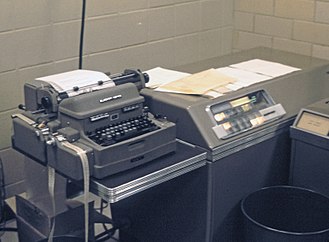From wikipedia: "From 1956 with a retail price of $47,000—equivalent to about $408,000 today... a desk computer ... approximately 740 pounds (340 kg) and was mounted on sturdy casters" and "The single address instruction set had only 16 commands. Not only was the main memory on magnetic drum, but so were the CPU registers, timing information and the master bit clock, each on a dedicated track. The number of vacuum tubes were kept to a minimum by using solid-state diode logic, a bit-serial architecture and multiple usage of each of the 15 flip-flops." -
https://en.wikipedia.org/wiki/LGP-30(Note that this is the very machine behind The Story of Mel -
http://www.cs.utah.edu/~elb/folklore/mel.html and
http://en.wikipedia.org/wiki/The_Story_of_Mel)
Anyone up to tackling this with a CPLD and a serial EEPROM?? It can run ALGOL!
A scan of the programming manual of the Librascope General Purpose 30:
http://ed-thelen.org/comp-hist/lgp-30-man.html"For fifty seconds the STANDBY light is on to indicate that tubes are at half filament power. For fifty more seconds the STANDBY TO OPERATE light is on indicating that the tubes are at full filament power and that the drum motor is energized. When the operate light comes on, the D.C. voltages are applied and the computer is ready for use."
Via
https://plus.google.com/u/0/+AlexandreK ... iaqYfVzCMQ
(20Kbit EEPROM in a 3-pin package:
http://www.digikey.com/product-detail/e ... ND/1768308)

